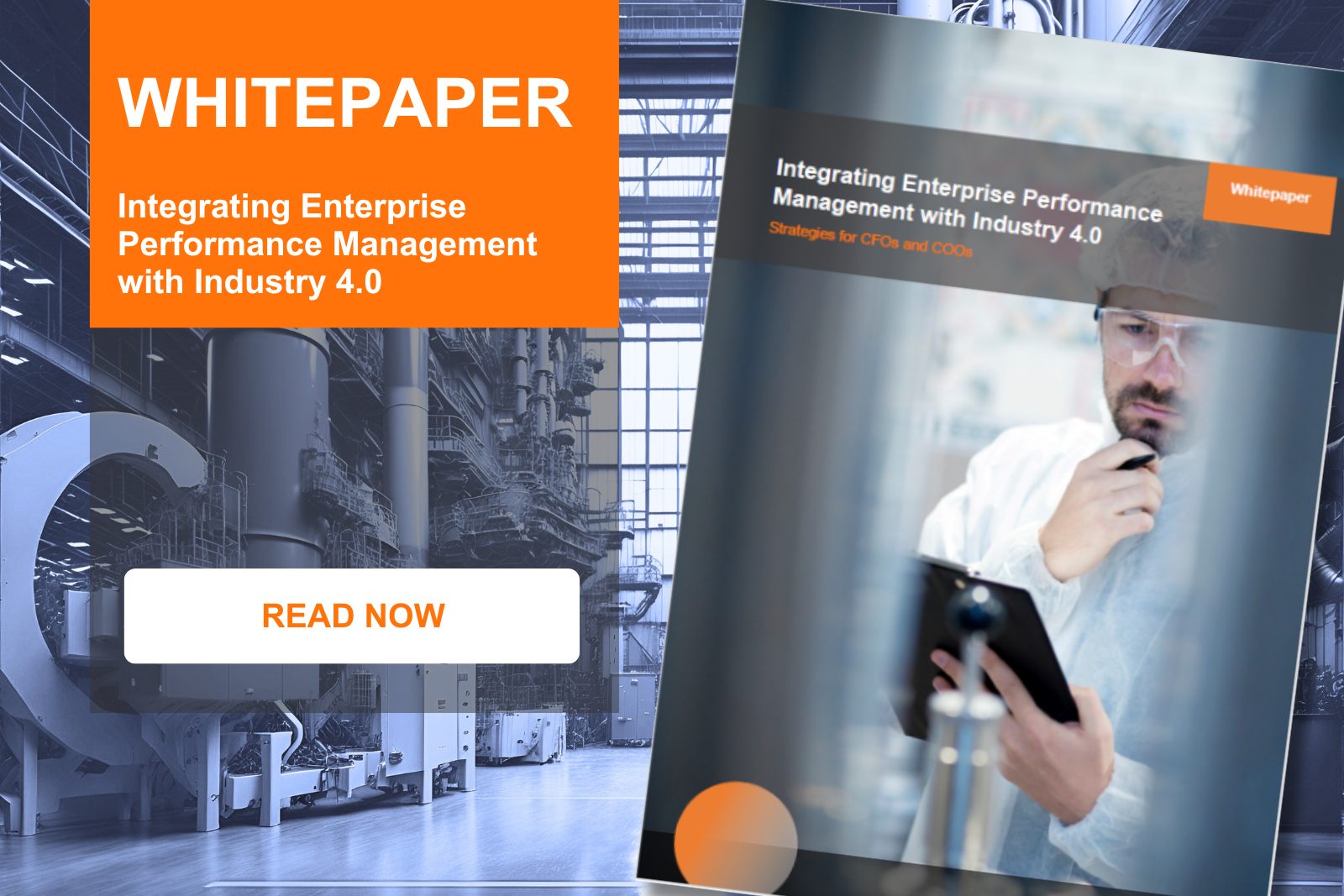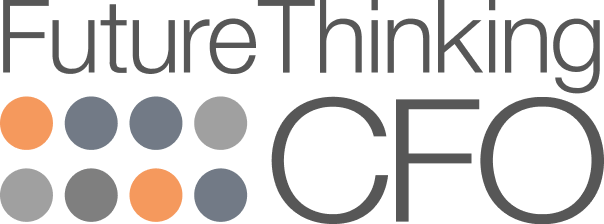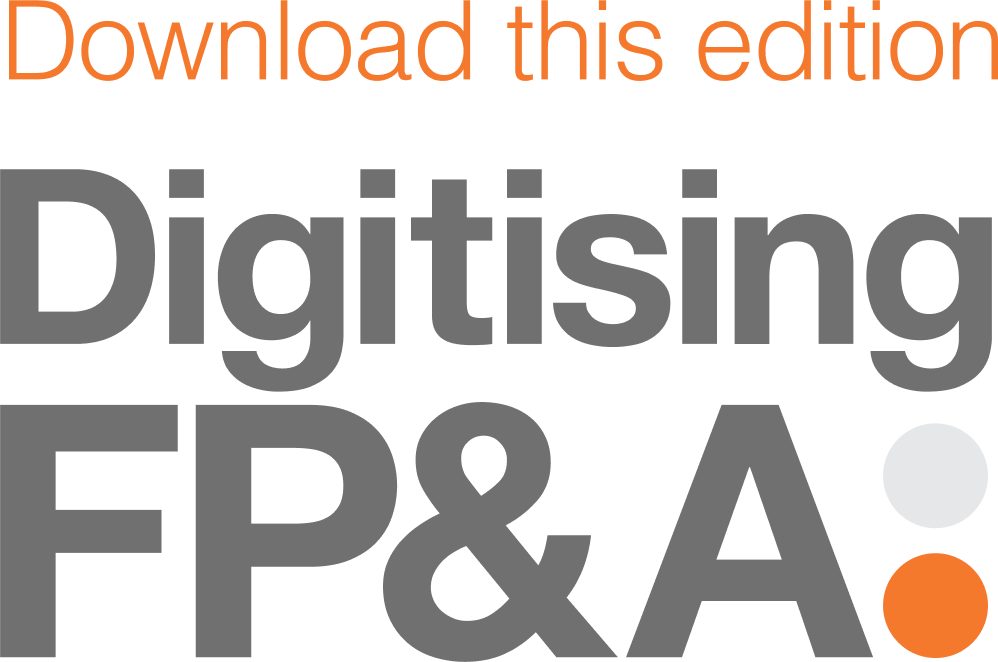Manufacturing
Industry Overview
The manufacturing industry in Australia and New Zealand (ANZ) has historically been a cornerstone of the region’s economic landscape, encompassing a diverse range of sectors. Particularly noteworthy is the food and beverage manufacturing sub-sector, which has capitalised on ANZ’s rich agricultural resources and diverse culinary heritage. Australian and New Zealand producers are globally recognised for their high-quality wines, dairy products, meats, and unique local offerings. This emphasis on clean, green, and sustainable production practices has boosted the appeal of ANZ food products in the international arena.
Simultaneously, the broader manufacturing sector has seen evolutions from traditional heavy industries to technologically advanced fields like aerospace and medical devices. Investments in research, development, and innovation, coupled with proximity to growing Asia-Pacific markets, have positioned ANZ manufacturers favourably, driving a shift towards value-added manufacturing and sustainable, future-proof industry practices.
Industry Challenges at a Glance:
The world of manufacturing is in a state of constant flux, shaped by both traditional barriers and emerging obstacles. As manufacturers navigate through tough global competition, there’s also an added pressure to embrace and integrate the latest technological innovations. These challenges not only test the resilience and adaptability of businesses but also highlight the need for forward-thinking and strategic planning.
Below are some of the challenges being faced:
- Global Competition
- Supply Chain Disruptions
- Technological Upgrades
- ESG (Environmental, Social, and Governance) Considerations
- Skills Gap
- Regulatory and Compliance Issues
- Capital Intensity
- Fluctuating Demand
- Intellectual Property (IP) Protection
- Customisation and Personalisation
- Energy Costs
- Quality Control and Assurance
- Digital Transformation
- Political and Economic Instabilities
- Shift to Circular Economy
- Health and Safety
- Global Competition
In today’s globalised market, Aussie manufacturers are not only competing locally but also with overseas entities, particularly from regions with lower operating costs. This intense competition requires them to persistently innovate, manage costs, and find unique value propositions to maintain a competitive edge. - Supply Chain Disruptions
Events such as global pandemics or geopolitical conflicts have spotlighted the vulnerabilities in supply chains. It’s imperative for manufacturers to build resilient and diversified supply chains that can swiftly pivot in response to unforeseen disruptions. - Technological Upgrades
The technological landscape is evolving rapidly. This change demands manufacturers to constantly integrate the latest tech, which in turn requires significant investments and ongoing training to ensure their workforce stays up-to-date. - ESG (Environmental, Social, and Governance) Considerations
ESG is now front and centre for ANZ manufacturers. Beyond mere compliance, it’s about championing environmental efforts, upholding social responsibilities, and demonstrating transparent governance. The challenge lies in intertwining these values with business growth and innovation. - Skills Gap
As manufacturing processes and technologies advance, there’s a growing gap between the required skills and the available workforce expertise. This divergence, particularly in advanced areas, calls for concerted upskilling and recruitment efforts. - Regulatory and Compliance Issues
Navigating the maze of both local and global regulations is no easy feat. Manufacturers must be constantly alert and adaptive, ensuring they remain compliant while also keeping their operations streamlined. - Capital Intensity
Modern manufacturing, especially when integrating new tech, can be capital intensive. This financial demand poses particular challenges for smaller manufacturers who may struggle to secure necessary funds. - Fluctuating Demand
The unpredictability of market demand, influenced by economic shifts, changing consumer behaviours, and global events, makes production planning and inventory management increasingly complex. - Intellectual Property (IP) Protection
With technological strides and heightened global competition, there’s an urgent need to protect intellectual assets. Manufacturers must be vigilant against potential infringements or counterfeiting of their innovations. - Customisation and Personalisation
Today’s consumers crave bespoke products. This desire pushes manufacturers towards more flexible production systems that can cater to individual preferences without compromising efficiency. - Energy Costs
Soaring energy prices can dent profitability. Manufacturers, especially those in energy-reliant sectors, are on the lookout for cost-effective and sustainable energy solutions. - Quality Control and Assurance
As manufacturing processes grow more complex and consumer expectations rise, maintaining product quality is more critical than ever, necessitating rigorous checks and balances. - Digital Transformation
Embracing digital technologies like the Internet of Things (IoT) and Big Data is not just about tech integration but represents a broader shift in the industry’s approach. It requires a cultural evolution alongside the adoption of new tools. - Political and Economic Instabilities
Trade tensions, tariffs, and regional unrest add layers of unpredictability. Manufacturers must be agile, ready to adapt to a shifting geopolitical and economic landscape. - Shift to Circular Economy
The move away from a “make-use-dispose” model to a more sustainable, circular approach requires manufacturers to rethink their production and waste management strategies. - Health and Safety
Manufacturing has inherent risks, and with the introduction of new technologies and processes, ensuring worker safety becomes even more crucial. It’s a perpetual challenge that demands continuous attention and evolution.

GK Horizons Future-Proofing Manufacturing
In the dynamic world of manufacturing, opportunities are abundant for those equipped to seize them. Leveraging the right tools is crucial, and that’s where Enterprise Performance Management (EPM) platforms shine, ushering in an era of enhanced collaboration, precise performance monitoring, seamless integration, and the depth of insights only advanced analytics can offer. While the advantages of EPM are clear, realising its full potential hinges on expert implementation.
At GK Horizons, we pride ourselves on helping our customers realise the full potential of their investment. By understanding the distinct challenges and ambitions of manufacturers in Australia and New Zealand, we facilitate the implementation of EPM use cases tailored to drive growth.
Industry Opportunities at a Glance
Challenges often emerge hand-in-hand with opportunities. For manufacturers in Australia and New Zealand, Enterprise Performance Management (EPM) platforms stand as a beacon, illuminating pathways through these challenges and revealing untapped opportunities. These platforms champion collaboration, enabling diverse teams to unite and work towards common goals. Enhanced performance monitoring tools ensure that every aspect of the manufacturing process is continually optimised and aligned with business objectives.
Furthermore, the integration features of EPM knit together different systems, creating a cohesive, streamlined operational flow. By leveraging advanced analytics, manufacturers can delve deep into data, gleaning actionable insights and predicting market trends.
Through features like “what-if” scenario modelling, EPM not only offers a window into the future but also empowers businesses to strategise proactively. What follows outlines how these challenges, when viewed through the lens of EPM’s capabilities, can be transformed into strategic opportunities for growth and innovation.
- Global Competition
- Supply Chain Disruptions
- Technological Upgrades
- ESG (Environmental, Social, and Governance) Considerations
- Skills Gap
- Regulatory and Compliance Issues
- Capital Intensity
- Fluctuating Demand
- Intellectual Property (IP) Protection
- Customisation and Personalisation
- Energy Costs
- Quality Control and Assurance
- Digital Transformation
- Political and Economic Instabilities
- Shift to Circular Economy
- Health and Safety
- Global Competition
EPM platforms enable real-time insights, fostering collaboration across teams, streamlining response strategies. By utilising “what-if” scenario modelling, manufacturers can simulate global market shifts, positioning themselves to swiftly adapt, innovate, and gain an edge over competitors. - Supply Chain Disruptions
Enhanced collaboration and integration through EPM ensures a unified approach to supply chain challenges. Scenario modelling allows manufacturers to test different supply chain configurations, leading to robust, diversified strategies. - Technological Upgrades
With EPM’s integration features, seamless technological adoption is facilitated. This platform brings together disparate systems while scenario modelling forecasts ROI and impacts of new technologies, ensuring strategic, informed upgrades. - ESG (Environmental, Social, and Governance) Considerations
EPM platforms promote collaborative tracking and reporting of ESG metrics, aligning teams towards sustainability goals. Scenario modelling offers insights into the potential impacts of various ESG initiatives, ensuring a cohesive strategy. - Skills Gap
Through collaborative tools in EPM, teams can identify and address potential skills deficiencies. Scenario modelling further assists in strategising training or hiring based on anticipated industry shifts. - Regulatory and Compliance Issues
EPM platforms offer integrated regulatory reporting and collaboration, ensuring streamlined compliance. Scenario modelling provides a proactive approach by simulating potential changes in regulations. - Capital Intensity
EPM platforms, with their collaborative features, optimise capital deployment through better budgeting and forecasting. Scenario modelling provides insights into strategic investments and potential financial implications. - Fluctuating Demand
Integrated demand forecasting in EPM, combined with collaboration, offers a comprehensive view of market dynamics. Scenario modelling helps manufacturers anticipate and adapt to market demand changes. - Intellectual Property (IP) Protection
EPM encourages collaborative IP management, safeguarding intellectual assets. With scenario modelling, manufacturers can strategise on IP commercialisation and protection, reinforcing their asset safeguarding. - Customisation and Personalisation
EPM platforms provide collaborative insights on consumer preferences, allowing manufacturers to anticipate customisation trends. Scenario modelling aids in planning the production shifts to meet these evolving needs. - Energy Costs
Collaborative energy monitoring through EPM identifies cost-saving opportunities. Scenario modelling offers guidance on formulating cost-effective, long-term energy strategies. - Quality Control and Assurance
Unified quality assurance processes in EPM ensure that products meet consistent standards. Scenario modelling optimises quality control strategies based on potential outcomes. - Digital Transformation
EPM’s robust integration capabilities ensure cohesive digital insights. Scenario modelling guides the path for digital adoption, ensuring a harmonised digital transformation journey. - Political and Economic Instabilities
By utilising EPM’s collaborative tools, teams can assess and mitigate risks in tandem. Scenario modelling offers insights into geopolitical or economic shifts, ensuring integrated risk management. - Shift to Circular Economy
EPM platforms facilitate the tracking of resource usage, promoting sustainable planning. Scenario modelling offers a view into the benefits and challenges of shifting to sustainable practices. - Health and Safety
EPM promotes collaboration in adhering to safety standards. Scenario modelling provides a roadmap for incorporating new safety protocols, especially in the face of new technologies and processes.
EPM Use Case Examples in Manufacturing
In the intricate tapestry of manufacturing, each thread represents a unique challenge, strategy, or opportunity. Enterprise Performance Management (EPM) serves as the loom that interweaves these threads, providing a structure that facilitates comprehensive oversight and strategic alignment.
Through various EPM use cases tailored specifically for the manufacturing sector, businesses can unravel complexities and weave together solutions that drive efficiency, innovation, and growth.
Use Case Description: For manufacturers, financial planning involves a holistic approach to understanding and directing the financial trajectory of the company. By leveraging EPM, they can develop and adapt financial plans that are both robust and flexible, ensuring they can respond effectively to the ever-changing manufacturing landscape.
Sub Use Cases:
FP&A (Financial Planning & Analysis): This encompasses a broad range of financial analysis activities to support strategic business decisions.
- Performance Metrics: Evaluating key performance indicators (KPIs) related to manufacturing efficiency, profitability, and growth.
- Variance Analysis: Identifying differences between projected and actual financial outcomes, understanding their root causes.
- Profit Margin Analysis: Scrutinising product lines or regions to determine profitability drivers and areas for improvement.
Three-way Forecasting: Provides a comprehensive view of the company’s financial position by integrating three key financial statements.
- Balance Sheet Projections: Forecasting assets, liabilities, and equity based on planned business activities.
- Profit and Loss Forecasting: Predicting revenues, costs, and profits based on production plans and market factors.
- Cash Flow Analysis: Highlighting the net change in cash position over a period considering both operational and non-operational activities.
Capital Expenditure Planning: Prioritising and budgeting for large expenditures that will become part of the company’s asset base.
- ROI Analysis: Evaluating the potential return on major investments such as machinery or technology upgrades.
- Lifecycle Costing: Estimating the total cost of ownership for a particular asset over its useful life.
- Depreciation Forecasting: Planning for the systematic allocation of the cost of tangible assets over their useful lives.
Scenario-based Budgeting: Using “what-if” analyses to prepare multiple budgets based on different scenarios.
- Market Fluctuations: Modelling financial outcomes under varying market conditions.
- Supply Chain Disruptions: Forecasting the financial impact of potential disruptions in the supply chain.
- Product Launch: Projecting the financial implications of launching a new product line or entering a new market.
Cost Allocation & Activity-based Costing: Distributing costs to products or services based on the activities that contribute to their production.
- Overhead Allocation: Assigning indirect costs to products or job orders.
- Cost Driver Analysis: Identifying the activities or factors driving costs in production.
- Product Profitability: Determining which products are most and least profitable based on a thorough cost analysis.
Revenue Modelling: Creating models to predict future revenue based on factors such as sales forecasts, market trends, and historical data.
- Sales Trend Analysis: Evaluating historical sales data to identify trends and inform future forecasts.
- Market Demand Forecasting: Estimating future sales based on market research and industry trends.
- Price Elasticity Analysis: Understanding how changes in price might affect demand and revenue.
Use Case Description: Operational planning in manufacturing, bolstered by EPM capabilities, ensures that a company’s daily operations align with its strategic objectives. EPM empowers manufacturers to design, monitor, adjust, and proactively strategise their operations, integrating advanced analytics, scenario modelling, and collaboration features.
Sub Use Cases:
S&OP (Sales and Operations Planning): A foundational pillar for manufacturing operational planning, S&OP ensures that the business is operating at the intersection of optimal supply capability and market demand. EPM platforms play a pivotal role in facilitating this by driving alignment, offering predictive insights, and fostering collaboration across departments and the leadership team.
- Sales Forecasting Integration: Leveraging EPM, manufacturers can integrate sales forecasting with other critical S&OP processes. This not only ensures that production capacities align with predicted sales but also helps in making proactive adjustments in response to market dynamics. Advanced analytics assist in refining these forecasts, making them more accurate and reliable.
- Collaborative Decision-making: EPM platforms enhance collaboration between sales, marketing, operations, and finance teams. Such synergy ensures that sales forecasts are realistically matched with production, inventory, and financial capacities. This collaborative approach eliminates silos, aligns strategic objectives, and ensures a unified response to market fluctuations.
- Demand and Supply Balancing: With the integration capabilities of EPM, manufacturers can balance supply with demand, ensuring that resources are allocated efficiently and that there are minimal stockouts or overstocks. Scenario modelling helps in predicting the outcomes of various demand-supply scenarios, allowing for better preparedness.
- New Product Introduction (NPI) Planning: Collaboration tools within EPM platforms allow for smooth integration between design, sales forecasting, production, and marketing when introducing a new product. This ensures a harmonised approach, from concept to market launch, maximising the chances of a product’s success. Within S&OP, NPI Planning can be seen as a tactical to operational activity. It involves aligning production capabilities, sales forecasting, inventory management, and marketing strategies to ensure a successful product launch. It’s about matching supply capabilities with the anticipated demand of the new product, which fits the essence of S&OP.
- Production Scheduling: Align manufacturing activities with sales forecasts, integrating with other systems for real-time data accuracy.
- Inventory Management: Use performance monitoring to balance stock levels, ensuring optimal inventory without overstocking.
Capacity Planning: Leverage EPM’s collaborative tools and performance monitoring to determine the production capacity needed to meet changing demands.
- Load Analysis: Compare available capacity with forecasted demand using advanced analytics, identifying potential shortfalls or surpluses.
- Bottleneck Analysis: Identify production bottlenecks and utilise scenario modelling to find solutions.
- Machine Utilisation: Monitor equipment use in real-time, factoring in maintenance schedules and downtimes.
Materials Requirement Planning (MRP): Systematically determine material requirements, integrating with other procurement and inventory systems.
- Bill of Materials (BOM) Analysis: Break products into components and raw materials, using analytics to predict material needs.
- Lead Time Analysis: Estimate component procurement or production time, and use scenario modelling for potential disruptions.
- Order Scheduling: Collaborate across departments to time purchases optimally.
Maintenance Planning: Use EPM to schedule equipment maintenance, preventing unplanned downtimes and enhancing longevity.
- Preventive Maintenance: Use performance monitoring to ensure routine equipment checks and servicing.
- Breakdown Analysis: Identify equipment issues, integrating feedback for continuous improvement.
- Resource Allocation: Collaborate on maintenance tasks, ensuring efficient resource utilisation.
Quality Management Planning: With EPM, maintain product quality through real-time monitoring and collaborative feedback loops.
- Quality Assurance: Adhere to quality standards, integrating with other systems for data consistency.
- Quality Control Checks: Use advanced analytics to test products against predetermined standards.
- Feedback Loop Integration: Implement feedback quickly, ensuring continuous operational improvements.
Logistics & Distribution Planning: Optimise storage and distribution using EPM’s integration and performance monitoring capabilities.
- Warehouse Management: Monitor storage in real-time, ensuring efficient space utilisation.
- Transportation Scheduling: Use analytics to ship products cost-effectively.
- Route Optimisation: Leverage advanced analytics to determine the most efficient delivery paths.
After-sales Service & Warranty Management: Post-sales services are crucial in the manufacturing industry, especially for products that come with warranties or require maintenance.
- Warranty Claim Analysis: Use advanced analytics to track and analyse warranty claims, identifying potential product defects or areas for improvement.
- Service Scheduling & Resource Allocation: Plan after-sales services efficiently, ensuring that necessary parts and personnel are available when and where they’re needed.
Product Lifecycle Management (PLM): Oversee the entire lifecycle of a product, from inception to discontinuation, ensuring that every stage is optimised for cost, efficiency, and quality.
- Product Development Collaboration: Use collaborative tools within EPM to bring together design, engineering, and marketing teams during product development.
- End-of-life Product Analysis: Harness analytics to decide when a product should be discontinued, updated, or replaced.
Use Case Description: Strategic planning with EPM capabilities enables manufacturers to set long-term goals, envision future trends, and align operational tactics with overarching objectives. By leveraging advanced analytics, scenario modelling, collaboration tools, and integration features, EPM offers a holistic view for business foresight and strategic alignment.
Sub Use Cases:
New Product Introduction (NPI) Planning: Collaboration tools within EPM platforms allow for smooth integration between design, sales forecasting, production, and marketing when introducing a new product. This ensures a harmonised approach, from concept to market launch, maximising the chances of a product’s success.
Market Analysis & Segmentation: Utilise EPM’s advanced analytics to segment markets, identify growth areas, and discern potential opportunities or threats.
- Trend Analysis: Predict market movements and shifts using historical data and scenario modelling.
- Competitor Benchmarking: Collaborate and integrate data to monitor competitor activities and position strategically.
- Customer Segmentation: Use analytics to understand customer behaviour and preferences for targeted strategies.
Goal Setting & Monitoring: Establish clear business goals and monitor progress with EPM’s performance monitoring capabilities.
- Objective Alignment: Ensure all departments and teams are aligned with the company’s goals through collaborative tools.
- Progress Tracking: Use real-time performance monitoring to track the achievement of strategic milestones.
- Feedback Mechanisms: Implement feedback loops with advanced analytics to adjust strategies as needed.
Scenario Planning: Leverage EPM’s scenario modelling to prepare for various potential future situations.
- Risk Assessment: Evaluate potential risks and their impacts using integrated data and modelling tools.
- Opportunity Analysis: Use analytics to discern possible growth or expansion areas.
- Strategy Simulation: Collaboratively test different strategic approaches and foresee their outcomes.
Resource Allocation: Optimise the allocation of resources for strategic initiatives, ensuring efficiency and ROI.
- Budgeting: Integrate financial data to allocate budgets effectively across strategic projects.
- Talent Management: Collaborate on skills and competencies needed for strategic objectives, aligning recruitment and training.
- Capital Expenditure Planning: Use performance monitoring and scenario modelling to forecast and plan major investments.
Mergers & Acquisitions Planning: Harness EPM tools for a holistic view of potential business integrations or acquisitions.
- Due Diligence Analysis: Utilise advanced analytics for comprehensive evaluations of potential business targets.
- Integration Road Mapping: Collaborate on a seamless integration plan post-acquisition.
- Value Realisation Tracking: Monitor the performance and value addition from the merger or acquisition.
Sustainability & Corporate Social Responsibility (CSR) Planning: With EPM’s capabilities, align sustainability efforts with business objectives.
- Environmental Impact Analysis: Use integrated data to assess and reduce environmental footprints.
- Stakeholder Engagement: Collaborate with stakeholders for CSR initiatives, ensuring alignment with business goals.
- Sustainability Reporting: Leverage performance monitoring to track and report on sustainability metrics.
Use Case Description: Workforce planning with EPM facilitates manufacturers in effectively aligning their human capital with their strategic and operational goals. The integration of advanced analytics, scenario modelling, collaboration capabilities, and performance monitoring ensures that the workforce remains adaptable, skilled, and prepared for future challenges.
Sub Use Cases:
Talent Acquisition & Retention: Harness EPM’s advanced analytics to forecast talent needs and identify patterns in employee turnover.
- Recruitment Forecasting: Use scenario modelling to predict future workforce requirements based on growth projections and industry trends.
- Retention Analysis: Collaborate with teams to discern reasons for turnover and strategise retention initiatives.
Skills Gap Analysis: Identify and address discrepancies between current skills and those required for future initiatives.
- Training Needs Assessment: Integrate data from multiple departments to identify areas requiring upskilling.
- Future Skill Prediction: Use advanced analytics to anticipate industry trends and the resultant skill requirements.
Productivity & Performance Monitoring: Optimise workforce productivity by regularly assessing and addressing performance metrics.
- Employee Productivity Analysis: Monitor individual and team productivity metrics in real-time.
- Performance Improvement Plans: Collaboratively develop plans to address any performance issues, using analytics to guide strategies.
Succession Planning: Leverage EPM capabilities to ensure the organisation is prepared for future leadership transitions.
- Leadership Gap Analysis: Use analytics to identify potential future leadership gaps.
- Scenario Modelling for Transitions: Collaborate and model different scenarios to prepare for smooth leadership transitions.
Compensation & Benefits Planning: Integrate financial and HR data to develop competitive and sustainable compensation strategies.
- Market Benchmarking: Compare company compensation with market standards using integrated data.
- Budget Forecasting for Benefits: Use scenario modelling to predict the financial implications of various benefits packages.
Workforce Diversity & Inclusion: Emphasise a diverse and inclusive workforce with the help of EPM’s collaborative tools and analytics.
- Diversity Metrics Monitoring: Track diversity metrics in real-time and set actionable goals.
- Inclusion Initiatives Planning: Collaborate across departments to strategise and implement inclusive practices.
Remote Work & Flexibility Planning: Plan for an increasingly remote or flexible work environment, considering its implications on productivity and collaboration.
- Remote Work Impact Analysis: Use advanced analytics to gauge the impact of remote work on productivity and collaboration.
- Flexibility Scenario Modelling: Simulate various flexible working models to predict their implications on operations and employee satisfaction.
Use Case Description: EPM solutions enable manufacturers to maintain regulatory compliance and manage risks more effectively. Leveraging collaboration, scenario modelling, integration, advanced analytics, and performance monitoring, manufacturers can predict, prepare for, and respond to a wide array of risks and compliance requirements in a holistic manner.
Sub Use Cases:
Regulatory Compliance Management: Stay abreast of ever-changing local and international regulations using EPM’s real-time monitoring and integration capabilities.
- Regulation Tracking & Updates: Employ advanced analytics to monitor evolving regulatory landscapes and adjust operational practices accordingly.
- Collaborative Compliance Audits: Engage various departments in periodic compliance checks and audits, ensuring an organisation-wide adherence.
Risk Assessment & Mitigation: Identify potential threats and develop strategies to counteract them using scenario modelling and data-driven insights.
- Predictive Risk Analysis: Tap into analytics to foresee potential risks based on historical data and market trends.
- Mitigation Strategy Modelling: Use scenario modelling to anticipate the effects of various risk mitigation strategies and choose the optimal approach.
Data Privacy & Security: Ensure that data is protected, and its handling complies with privacy regulations, utilising EPM’s robust security and performance monitoring.
- Data Breach Scenario Analysis: Simulate potential data breaches to evaluate the efficacy of current security measures.
- Regulatory Adherence Tracking: Monitor and adjust data management practices in real-time to remain compliant with privacy laws like GDPR or the Australian Privacy Principles (APPs).
Financial Risk Management: Leverage the integration and analytics capabilities of EPM to predict and respond to financial uncertainties.
- Liquidity & Solvency Analysis: Use advanced analytics to monitor financial health indicators and foresee potential liquidity issues.
- Market Volatility Modelling: Engage scenario modelling to predict market changes and strategise proactive responses.
Operational Risk Management: Anticipate disruptions in operations, from equipment malfunctions to supply chain interruptions, and develop contingency plans.
- Supply Chain Disruption Analysis: Collaborate with suppliers and internal teams to model potential disruptions and their impacts.
- Performance Deviation Monitoring: Track real-time operational data to quickly spot and address any deviations from the norm.
Environmental & Social Governance (ESG) Compliance: Align manufacturing processes with ESG standards using EPM’s holistic planning and monitoring capabilities.
- Sustainability Impact Modelling: Use scenario modelling to gauge the environmental impact of manufacturing processes and plan greener alternatives.
- Stakeholder Engagement & Reporting: Collaborate with stakeholders on ESG initiatives and use integrated reporting tools to communicate progress transparently.







